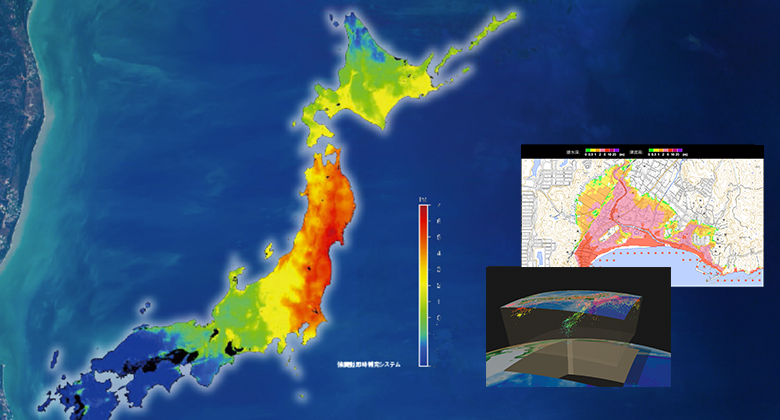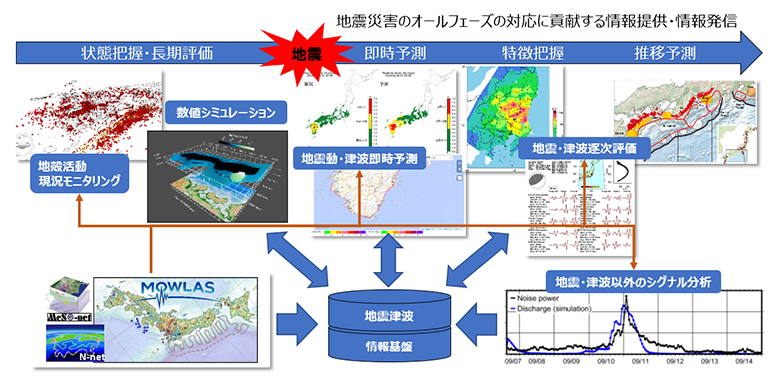Development of technology for immediate sequential assessment of earthquake and tsunami
Application of observation data to earthquake and tsunami disaster risk reduction

In the “Advanced earthquake and tsunami forecasting technologies project” under the 4th Mid-to-Long-term Plan (FY2016-2022), NIED has achieved significant results in research and development, including the prediction of seismic “ground motion” from “ground motion” using observation data, real-time tsunami prediction, and the continuous monitoring of diverse types of crustal activities, and we contributed to overcoming the various issues related to earthquake and tsunami disaster risk reduction that was highlighted by the Great East Japan Earthquake that occurred in March 2011, as well as to long-term evaluation.
Focus on “sequential” connecting without temporal breaks
In the 5th Mid-to-Long-Term Plan (FY2023-2029), in addition to the “immediate” and “continuous” monitoring that were developed in the 4th Term, we will focus on “sequential” monitoring, which links “immediate” and “continuous” without temporal breaks, and will engage in research and development to improve our ability to predict earthquakes and tsunamis as well as our preventive ability to reduce damage.
NIED has established seven observation networks covering land and sea areas throughout Japan, which are operated as Monitoring of Waves on Land and Seafloor (MOWLAS). The Nankai Trough Seafloor Observation Network for Earthquakes and Tsunamis (N-net), which is currently being constructed, is also scheduled to be added to MOWLAS. The data obtained from MOWLAS and the N-net will be analyzed and evaluated immediately after the occurrence of a major earthquake, and the source information of the earthquake, the characteristics and course of seismic motion and tsunami will be immediately and sequentially determined and estimated without any time gaps. We will also research and develop methods for providing real-time information by organically linking information on past earthquakes and tsunamis and preliminary assumptions with information that is grasped and estimated immediately and sequentially. In particular, in the ocean area, we will conduct research and development on method that can be applied to even mega thrust earthquakes with an extensive seismic source region, such as the entire Nankai Trough, and create information that is useful for predicting damage and making decisions during disasters. To this end, we will promote research and development to improve various current monitoring technologies and related numerical simulation technologies. In addition, we will contribute to improving the monitoring accuracy of earthquakes and tsunami phenomena and to evaluating various natural hazards by developing technology to detect signals from phenomena other than earthquakes and tsunamis captured by MOWLAS and other systems and to investigate their causes. We will integrate these results and proceed with the construction of an integrated database that can be cross-referenced in cyberspace.
The results obtained will be widely disclosed via websites, and observation and forecast information before, during, and after a major earthquake will be shared and coordinated with related organizations both inside and outside the institute. In this way, we will provide and disseminate information products that contribute to all-phase responses to earthquake and tsunami disasters, and contribute to improving the resilience of society.

